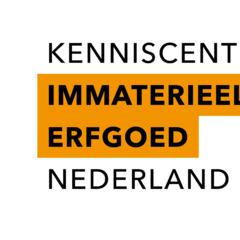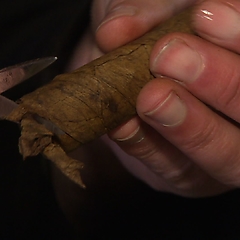Aged Artisan Gouda - Boeren Goudse Oplegkaas - is a traditional farm cheese made according to an age-old recipe. As far back as the Middel Ages, Dutch farmers have made artisan cheeses in the summer. The grass of the western peat meadow, known today as the Goren Hart, possesses a natural tenderness in the summer, making it an excellent base for making cheese.
At the moment there are only two farmers and cheese makers who make the Aged Artisan Gouda: the Captein family on the edge of the Groene Hart in the Grote Polder of Zoeterwoude in rural Weipoort. And Hugo and Marije van der Poel. Their cheese farm, Hoeve Waterrijk, is located on an island at the edge of Kaagplassen in South Holland.
Aged Artisan Gouda stands for farmhouse cheese made from raw milk from their own cows that graze in the pasture all summer. Raw milk means that the milk is not heated, which means that valuable elements and flavor are retained. 'Gouda' means recognizable by its characteristic shape, a golden yellow wheel that with its generous weight of 20 kilos is suitable for long ripening. Aged means matured for at least 18 months to develop its rich, full taste. The traditional use of wooden barrels and linen cloths makes this cheese unprecedentedly smooth.
Process
Aged Artisan Gouda is only made with summer milk. The cows are mainly red Holsteiners. They produce less milk than black Holsteiners, but the milk is richer in protein and fats. The fresh, still warm cow's milk is added to the milk of the previous evening. Next is to add a starter culture and rennet, which makes the milk turn into a white curd. The curd is stirred, and then split into two parts. The liquid part, the whey, is drained. The remaining curd is the basic ingredient for the cheese.
The curd is placed in wooden barrels protected by linen cloths. These wooden barrels help maintain the temperature just a little longer than the usual plastic barrel. A little difference of great importance that helps to create the cheese's characteristic creaminess. The curd is pressed into the characteristic shape in these wooden barrels. This is followed by a five-day brine bath, which allows the salt to slowly penetrate the cheese for the taste.
After this bath, the cheese is transported to the affixer, where it is given plenty of time to ripen further on wooden shelfs. The affineur brushes, coats and turns the cheese for at least 18 months until it has developed its characteristic rich, full flavor and smoothiness.
Taking nature into account
At the Captein cheese farm, volunteers from nature organizations look for nests for meadow birds. It is then mowed around it so that the birds can lay their eggs in peace. Hoeve Waterrijk also collaborates with nature. The ditches of the island are not mowed in order to give space to the unique biodiversity and birds. The birds on the land are also given space by mowing in mosaic management. As a result, the vulnerable young birds are concealed in the tall grass.
Aged Artisan Gouda has the EU quality mark: Guaranteed Traditional Specialty, the KB quality mark and is also included in the Ark van Smaak (register for culinary heritage) of Slow Food Nederland, an association that is committed to good, clean and fair food worldwide.



